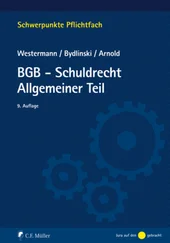“This may be getting away from us,” Thompson said, not hiding his fear. “The seismographs are swinging all over the place. I don’t like the way these aftershocks keep hammering us.”
“How many have we had?” Elizabeth asked.
“Five big ones within the last two minutes. Three over a mag 5. And maybe twenty smaller ones in the mag 4 or less range. They’re popping everywhere. We just had a mag 5.4 seventy miles northwest of Memphis.”
President Ross and Steve Draper stood behind Atkins and Elizabeth. The president listened to what Thompson was reporting, not saying a word, hands thrust in the pockets of his jacket. If he was frightened, he didn’t show it. He was holding on to the edge of a portable table that had been set up to hold the radio equipment. It was difficult to stand during some of the stronger tremors. They were coming almost back-to-back.
The profound uncertainty of what they were doing had tormented them all along. Atkins couldn’t help but wonder if their questions were being answered once and for all with each of these powerful seismic convulsions.
“Is there anything we can do?” Ross said.
“Nothing,” Atkins said. The ground rocked upward again, the hard vibrations rippling up through his legs and spine. The aftershocks weren’t nearly as powerful as the 8.4 monster, but they were very strong. Atkins and the others, everyone in the field, continued to hear what one soldier called “ground thunder,” the rumbling, otherworldly sound that seemed to rise from deep in the earth. Over the last few days Atkins had come to hate it.
What fools they’d been to think they could stop an earthquake, he thought. What arrogance to assume they could meddle with one of nature’s most destructive forces.
He feared that’s how they’d be judged. As arrogant, dangerous fools.
The Caruthersville Fault was going to touch off another killer earthquake. You had no options, he reminded himself bitterly, slapping his gloved hands together in the cold. You had to do something. You had to try to stop it.
He wasn’t going to make any excuses. He wouldn’t permit it. He’d never do that no matter what he had to face.
Later, he’d have difficulty trying to pin down how much time elapsed between this crushing feeling of depression and self-doubt and the moment Elizabeth gently touched him on the arm. He realized it could have been only twenty to thirty minutes at most. It seemed much longer, a black hole chiseled into his memory as he shivered with fear in that cold, bleak field.
Elizabeth said, “They might be slowing down.”
The last few tremors were noticeably milder. And they were coming farther apart.
Atkins felt it, too.
The aftershocks appeared to be diminishing, winding down like a great engine coming to a halt.
For the next hour as the black sky seemed to press down upon their heads, so oppressively low they felt they could touch it, Atkins and Elizabeth timed the aftershocks. Joined by the president, their eyes were glued to their watches.
Guy Thompson called back. He sounded excited. “It looks like they’ve stopped,” he shouted. “We haven’t recorded a significant tremor in ninety minutes.”
His amplified words carried far in the cold, damp air. Some of the soldiers who’d started a bonfire broke into loud cheers.
Elizabeth slipped her arm around Atkins’ waist. They spoke to Thompson together. He told them the accelerations had fallen to almost zero.
IT was still too early to celebrate. They knew they’d be on edge for the next few days. They’d have to wait until they could get a definitive reading from the GPS system. The satellite data would tell them if the ground was deforming anywhere along the extensive seismic zone. A crucial test, it was the only way to assess how much elastic strain energy remained trapped in the ground.
Atkins doubted they’d released all of it. A one-megaton bomb simply wasn’t powerful enough to do that, but they didn’t have to. Their strategy all along was to discharge just enough tectonic stress or “critical asperity” to break the cycle of earthquakes without pushing the fault into a major upheaval.
The ultimate outcome still wasn’t known, but for the time being, they couldn’t deny there’d been a pronounced drop-off in seismic activity. Atkins wanted to believe it was happening, wanted to let down his guard, his scientific skepticism, and hope for the best.
“Excuse me, sir, but do you know you’ve been shot?” one of the soldiers said, a medic.
Atkins took his first good look at his right forearm. Wren’s bullet had opened a shallow furrow that ran just across the wrist. The bullet had nicked the bone, but hadn’t done any serious damage.
The medic quickly got a bandage on it and examined Atkins’ nose.
“Good clean break,” he said. “Looks like the second time, right?”
Atkins nodded. He winced when the soldier gently touched the bridge.
“I like it,” Elizabeth said, smiling. “I think it helps.”
She kept remembering how she felt when she’d climbed out of the mine. It had hurt to be out of his sight, not knowing what was happening to him as the shaking intensified. Leaving him below in the darkness was the most difficult thing she’d ever done.
When Atkins took her in his arms, something burst open inside him, an aching release unlike anything he’d ever experienced. Trapped in the depths of the mine, he hadn’t allowed himself to think about this moment—hadn’t dared. She’d taken off her hard hat. Her dark blond hair hung to the shoulders of her jumpsuit, which was caked with coal dust and white powder. He’d thought about her hair often during the last few hours, wondering whether he’d ever see it again. He wanted to run his fingers through it.
Just after 11:00 P.M., Army patrols reported the route was secure. They got back into their Humvees and other vehicles and drove two miles to the red shack, where they spent the rest of the night, drinking strong coffee as Thompson’s team continued to monitor the encouraging seismic readings.
In the morning, as the sun began to rise in a clear blue-gray sky, Atkins and Elizabeth took a walk. They hiked along the ridge to an opening in the trees where they could look out over a wide valley.
Elizabeth noticed them first, the distant shapes almost obscured in the long shadows that had spread across the floor of the valley as the sun climbed higher over the hills.
Atkins had borrowed a pair of binoculars. He adjusted the eyepiece. The image snapped into sharp view—a line of brown-and-white cows that had come out of the woods single file and were grazing in the pasture. Farther off, he saw two horses with their heads down, a mare and a gray colt, feeding in the tall grass.
They were the first animals they’d seen in days.
Atkins finally let himself dare to believe it. Finally let himself go.
It was over.
The author gratefully acknowledges the following:
Gutenberg-Richter Publications, for the illustrations previously published in The Earthquake That Never Went Away, by David Stewart and Ray Knox.
The St. Louis University Earthquake Center, website http://www.eas.sluedu/Earthquake-Centerfor the illustration.
Thomas Borgman, for the illustrations.
A number of seismologists, disaster planners, structural and mining engineers, nuclear weapons experts, and others provided invaluable help in researching this book. I here thank several who took extra pains. I tried to hew to scientific fact as much as possible, and I take full responsibility for reworking facts for the sake of fiction; the good people I acknowledge bear no responsibility for how I used the material they so graciously provided.
Читать дальше












